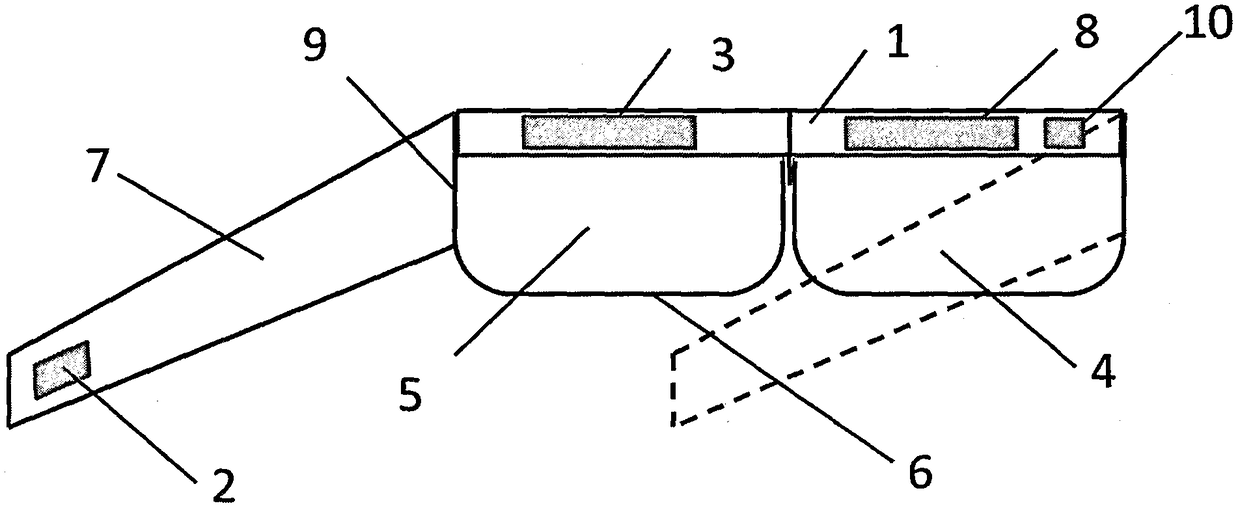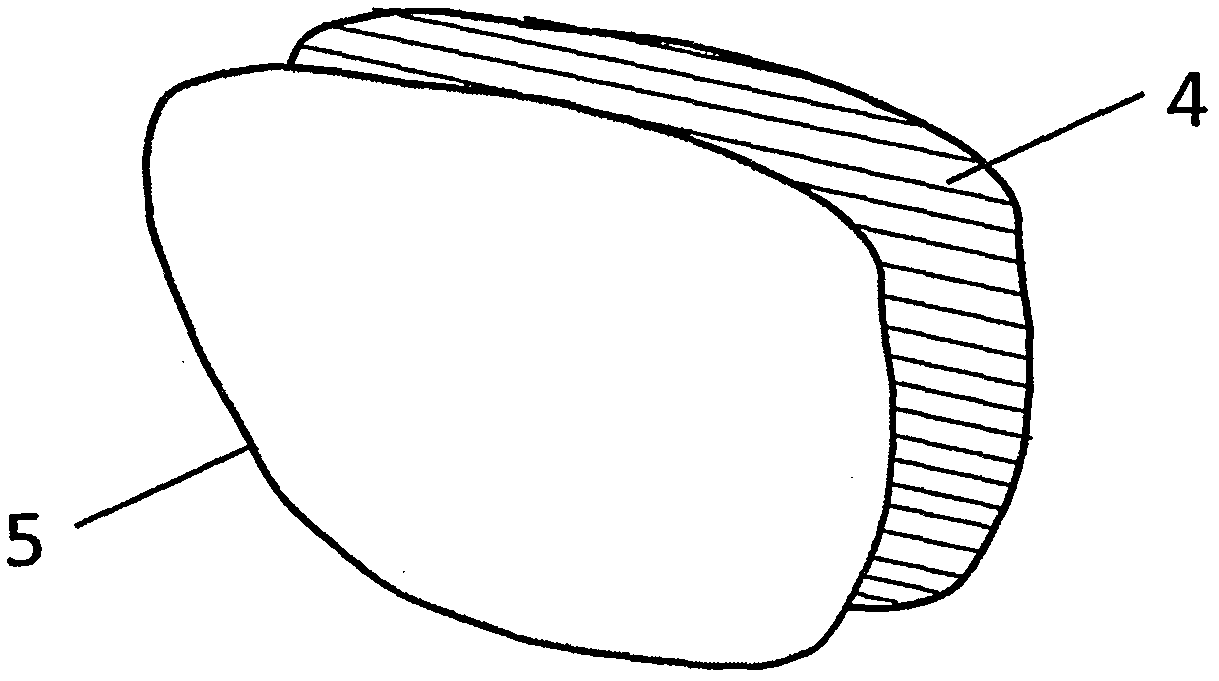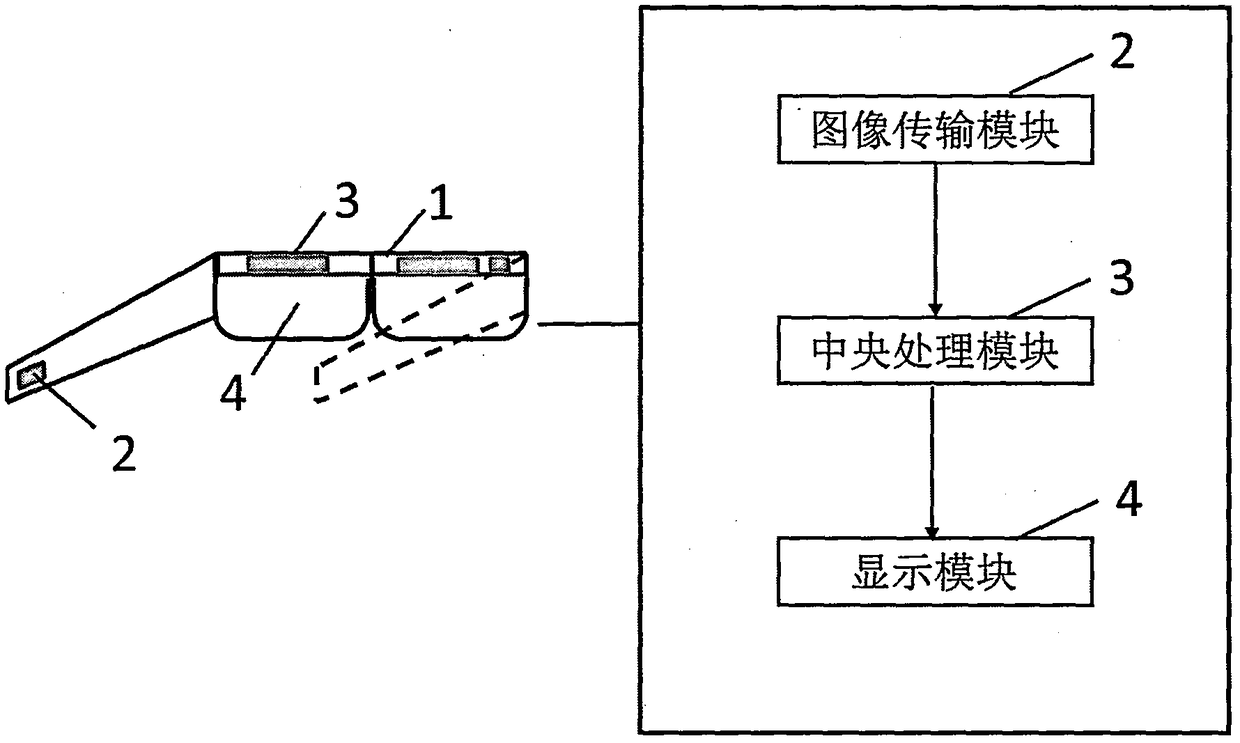Intra-operative intelligent navigation glasses for precisely cutting away intracranial space-occupying lesions
An intelligent navigation and venereal disease technology, applied in the field of clinical medical surgery, can solve the problems of complex equipment, inability to achieve full incision, expensive and other problems, and achieve the effect of reducing surrounding tissue damage, promoting wide application and simple structure
- Summary
- Abstract
- Description
- Claims
- Application Information
AI Technical Summary
Problems solved by technology
Method used
Image
Examples
Embodiment
[0017] Examples of the present invention are Figure 1 to Figure 3 As shown, the present invention includes glasses 1 , an image transmission module 2 , a central processing module 3 , and a display module 4 . The glasses 1 include lenses 5, frames 6, temples 7 and polymer lithium batteries 8; the image transmission module 2 is located at the end of the temples 7; the image transmission module 2, the central processing module 3, and the display module 4 are connected in sequence through data transmission wires .
[0018] In this embodiment, the lens 5 is curved and oval, made of natural resin material, 30-60mm long, 20-40mm wide, the left and right sides are the same, with a distance of 12-24mm; the frame 6 fits the shape of the lens 5, and the two Connected by card slots, length 80-140mm; mirror leg 7 is flake-shaped, streamlined, with a slightly thinner tail, and length 120-160mm; frame 6 and mirror leg 7 are made of memory titanium alloy material, and the two are connected...
PUM
| Property | Measurement | Unit |
|---|---|---|
| Thickness | aaaaa | aaaaa |
Abstract
Description
Claims
Application Information
 Login to View More
Login to View More - R&D
- Intellectual Property
- Life Sciences
- Materials
- Tech Scout
- Unparalleled Data Quality
- Higher Quality Content
- 60% Fewer Hallucinations
Browse by: Latest US Patents, China's latest patents, Technical Efficacy Thesaurus, Application Domain, Technology Topic, Popular Technical Reports.
© 2025 PatSnap. All rights reserved.Legal|Privacy policy|Modern Slavery Act Transparency Statement|Sitemap|About US| Contact US: help@patsnap.com



